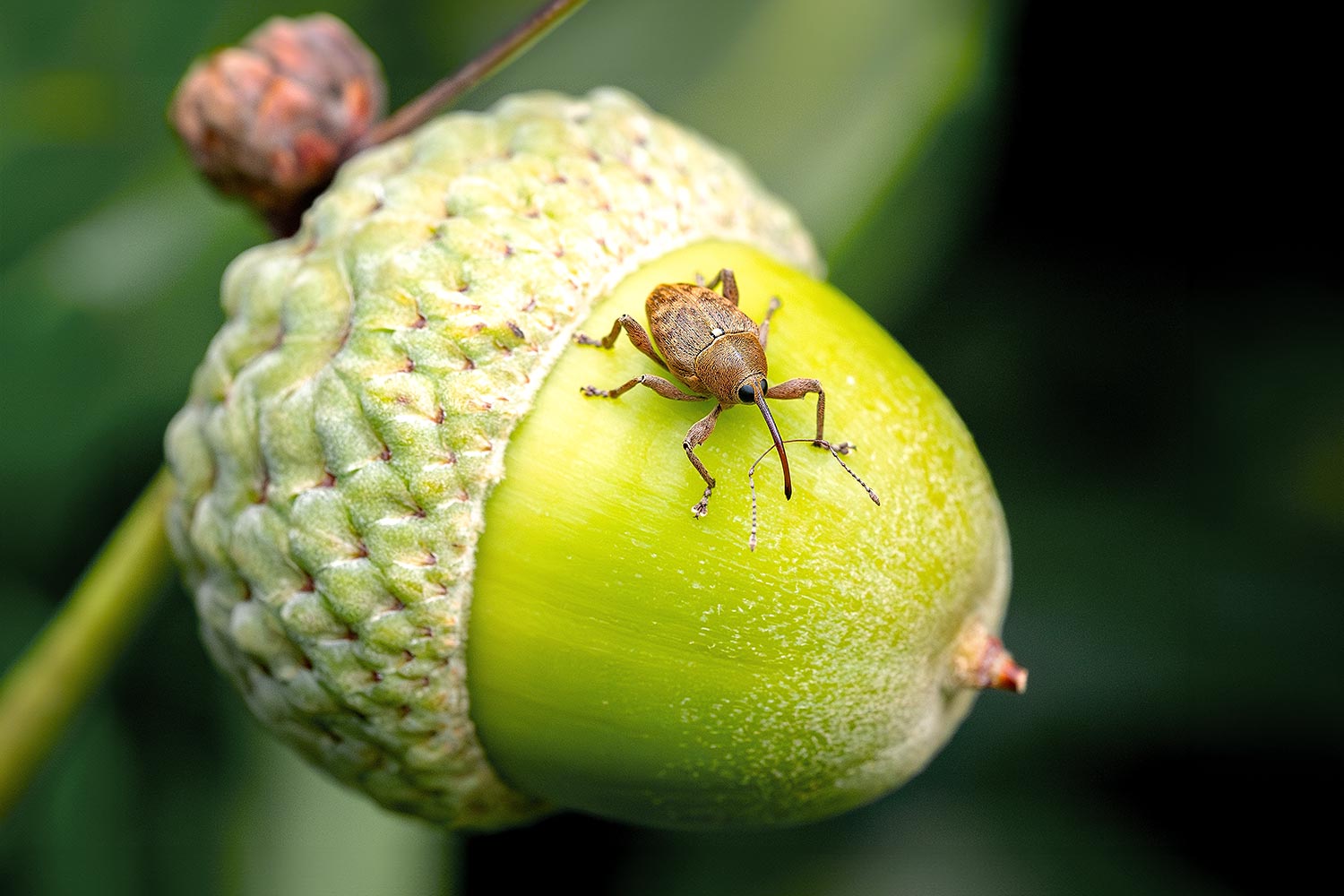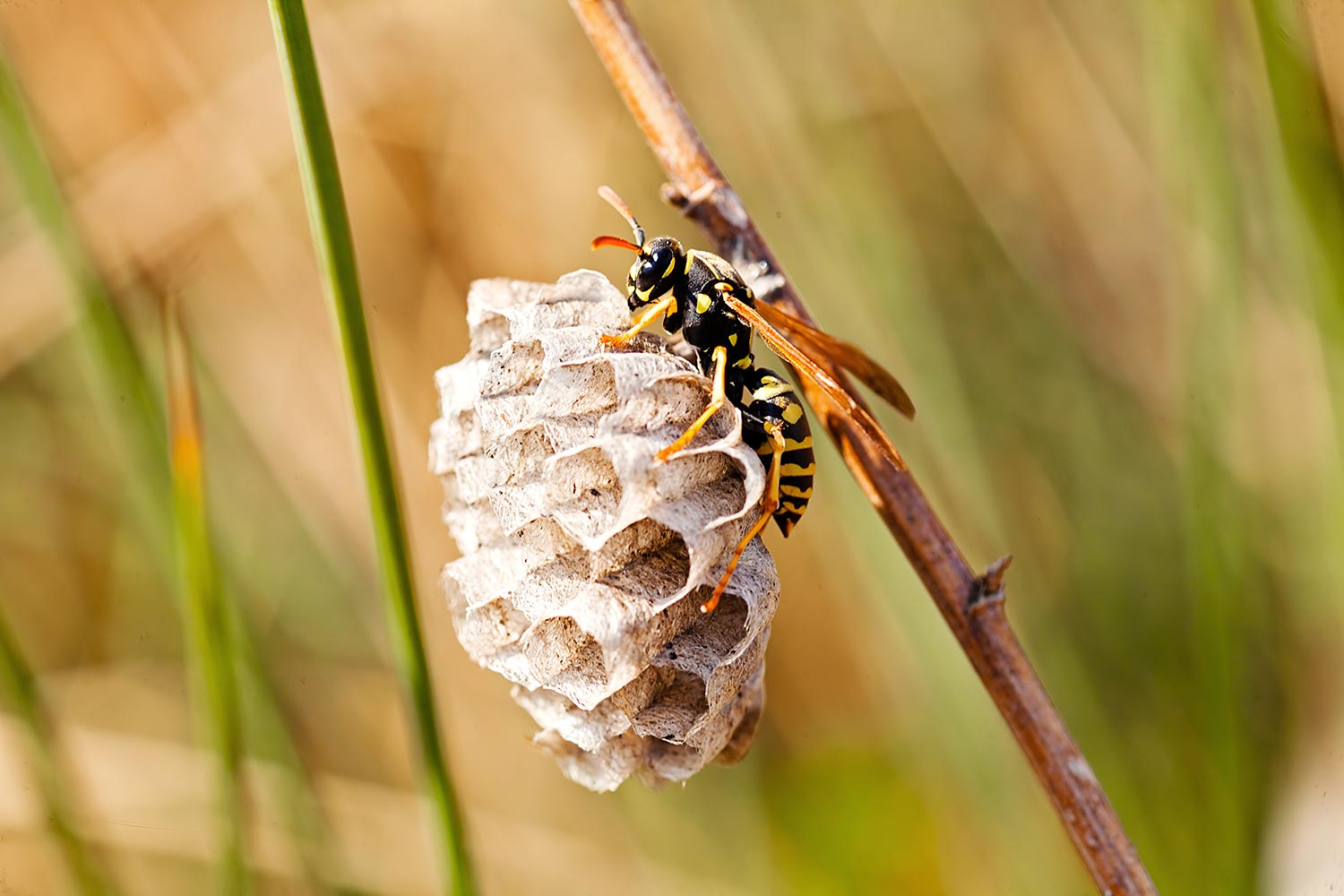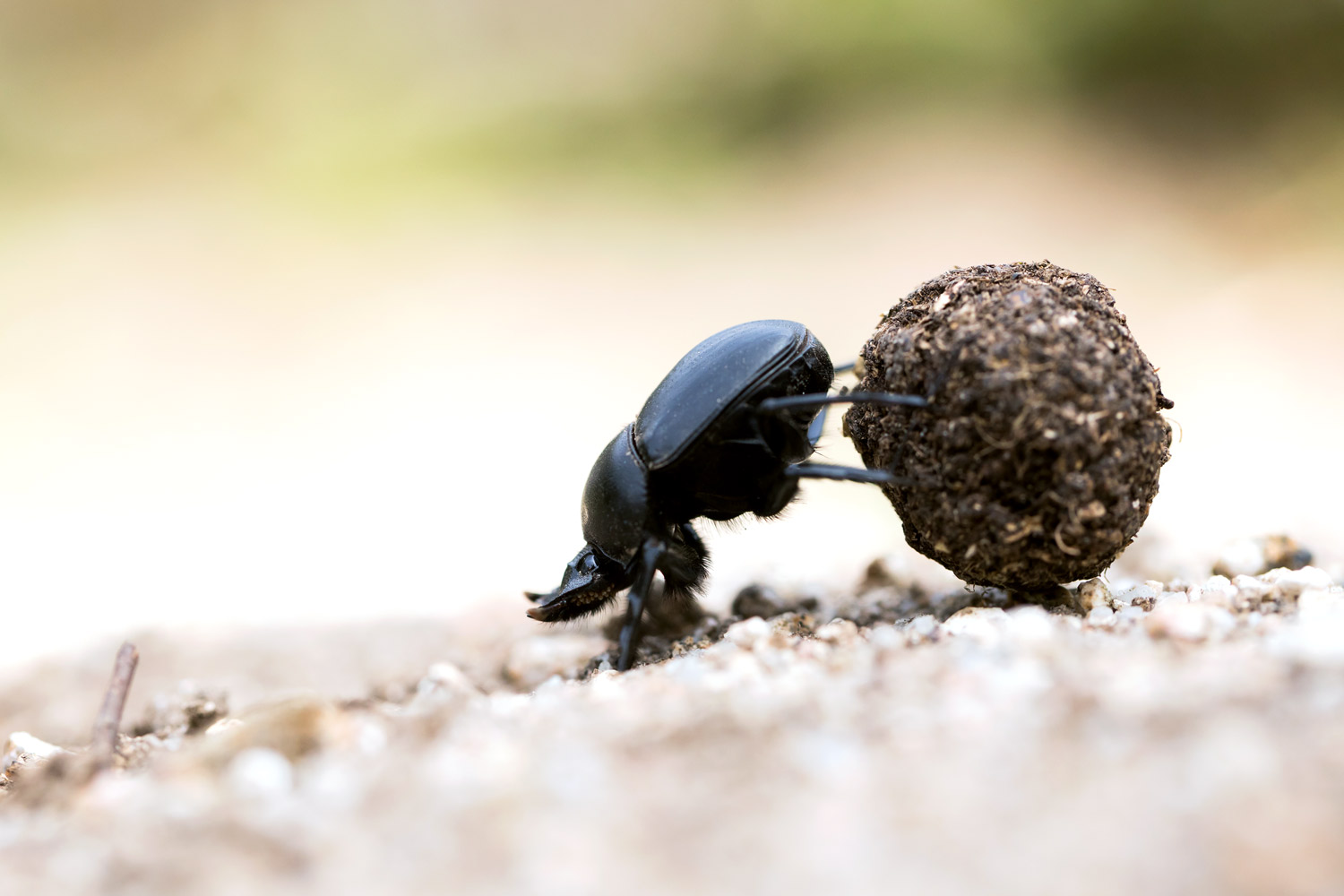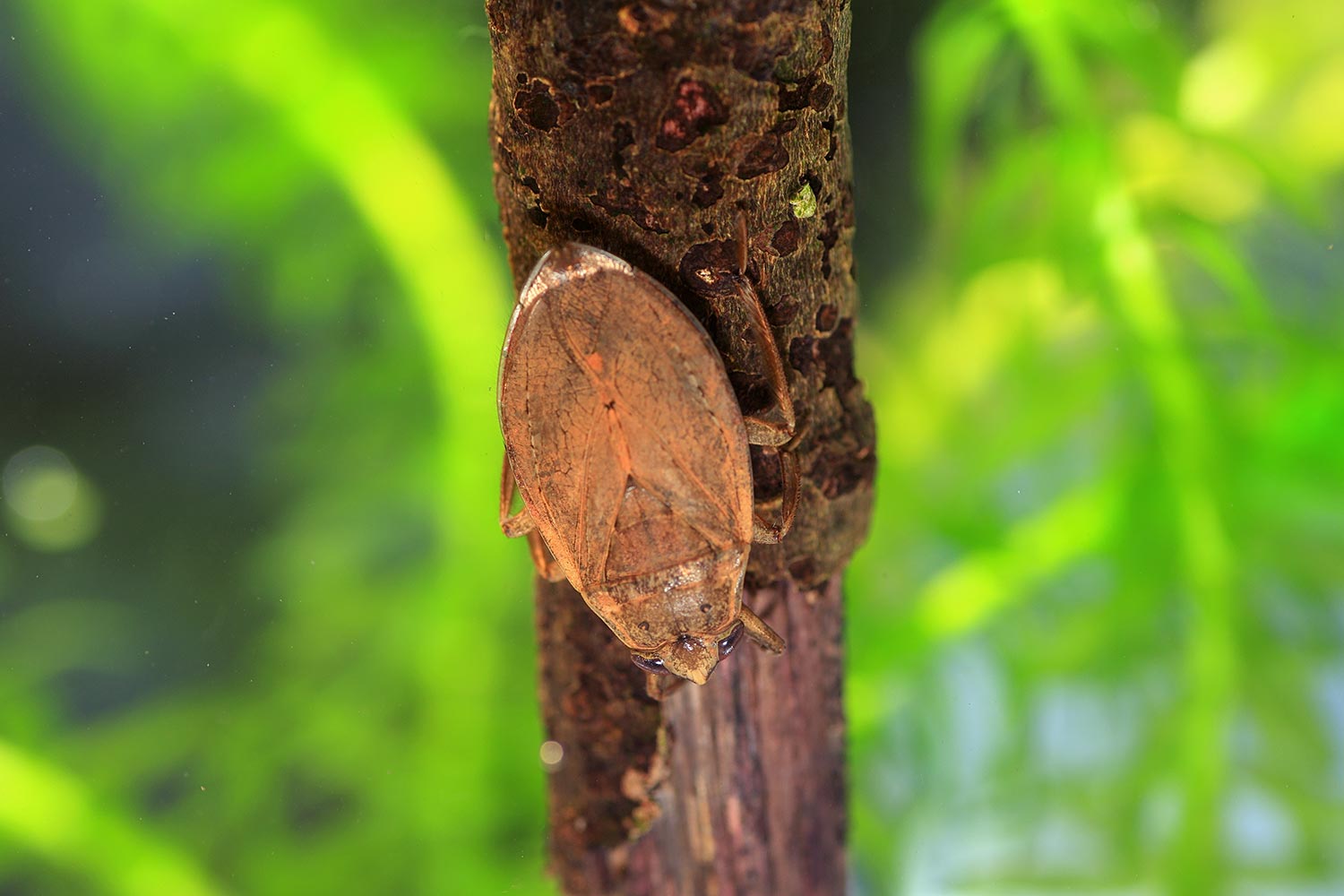An oak tree twig with four or five leaves “suddenly” falls from the air. In fact, the quiet trail is full of twigs with acorns attached to them. The edges of the twigs are straight as if they were cut with a knife, so it must’ve been done by someone. It is August when the sunlight feels strong as if the summer wants to stay longer and the trees are greener. Who ruined these acorns that are still green and unripe?

The ones who did it are acorn weevils. If you take a close look at the fallen acorns, you can see that each one has a black dot. They are holes acorn weevils made with their long snouts and laid eggs. The unripe acorns are perfect to lay eggs because wild animals avoid eating them because they are not ripe yet and they are soft for their larvae to feed.
The mother acorn weevils stick their snouts into the unripe acorns to break through the hard shells and spin around. Then they lay an egg in each acorn and start cutting the twigs about one span from the fruit. The mother that is only about 1 cm long works for her children even before the pain of spawning goes away. Like this, she sends her larvae with food so that they can hibernate under the ground when they wake up. When the twigs with several leaves attached to them land on the ground lightly, the larvae will hatch about a week later. It is such great devotion of the mother acorn weevil because each one lays about 20 to 30 eggs.
Due to global warming, the number of acorn weevils has been increasing greatly every year. Because they destroy the food for wild animals, people call them pests and do not show them much favor, but the mothers’ devotional love for their larvae is heartbreaking.
The small and trivial-looking insects’ love for their children doesn’t end here. The mother insects choose the safest place with all their wisdom when the spawning season comes, lay eggs there, and take care of them and protect them with all their might.

When it comes to bees, most people think of a swarm of bees gathered in a beehive, full of hexagonal rooms. However, unlike the honeybees that stay together in the winter, wasps are all scattered when autumn deepens. The queen wasp spends winter and builds a house alone in spring, lays eggs, and makes a big family. In the middle of summer, the family of paper wasps looks lively with numerous worker wasps. But until the big family is made, the labor of the mother is indescribable.
After winter, the queen paper wasp herself bites the bark, mixes it with the spit, and makes a small nest with several rooms, almost making her title queen unsuitable for her. After the laborious construction of the nest is finished, she lays an egg in each room and checks on them frequently. When it is hot, she brings water, holding it in her mouth, and gives out a drop in each room, and after it rains, she sucks the water and spits it outside the nest. This is not all. She flaps her wings to circulate the air so that the nest will not get too hot.
When the eggs hatch, the mother gets even busier. The mother feeds on honey, but she has to bring meat because she has to provide the larvae with protein. She gets extremely busy because she has to chew all the food and feed the voracious larvae.
While the mother is out to seek food, the house gets attacked by a colony of ants. The weak larvae tries to resist, but it is useless. After all the ants leave after eating the larvae to their hearts’ content, the mother comes home and finds what has happened, and she is devastated. It’s because many of the larvae that were attacked died. However, the mother does not give up but chooses a safe place and starts all over again. When the larvae that hatch first grow up and become imagoes, they help their mother build a house and take care of larvae. She makes a big family in summer, but when fall comes, the mother quietly dies, looking at her children leaving her.
The red-banded sand wasp lives alone and hunts. Such lonely hunting is also for its young. As soon as the sun comes up, the mother red-banded sand wasp diligently digs an underground tunnel. It takes her half a day to complete the underground tunnel. When it’s ready, she puts a stone at the entrance so that no one can notice the tunnel, and then she leaves for hunting. Upon finding a caterpillar, she quickly paralyzes it with a sting, and manages to move it, which is a few times bigger than her own body, rolling and bumping here and there. She can’t fly, carrying the heavy caterpillar, and she can’t even take a break because she will definitely get attacked by a swarm of ants if she takes a break. The reason the mother does this is to lay eggs on the caterpillar and feed live fresh food to her baby wasps that will hatch soon.
On the other hand, a tachina fly keeps following the mother red-banded sand wasp like a stalker as if it’s up to something. While the mother wasp is working on placing the caterpillar in a tunnel for a few seconds, the tachina fly quickly lays her eggs inside the tunnel and disappears. The mother wasp which doesn’t know anything about it hopes that its young will grow well, but the tachina fly’s larvae will hatch first and eat all the wasp’s eggs, to say nothing of the caterpillar the mother wasp prepared. The back of the mother red-banded sand wasp, which leaves for hunting after digging a tunnel for another baby, looks pitiable.
Earwigs, which like humid and dark places, often surprise people by appearing inside the house. Unlike the strange appearance with forceps on the tail, they are known as insects with strong maternal love. While most of the insects do not take care of their young after hatching, the earwig wholeheartedly takes care of them from the egg stage until the young grow up and become independent.
The mother earwig lays 50 to 100 eggs and wipes them clean one by one, piles them up, and cares for them until they hatch. The mother earwig repeatedly moves her eggs to the shade when it’s sunny and to a dry place when it’s raining so that the eggs can be kept in the adequate temperature and humidity for hatching. When another insect appears, trying to attack the eggs, she fights, risking her own life. When the larvae hatch out of the eggs, the mother earwig feeds them and protects them until the young can get their own food.


Dung beetles, which are remembered for their funny act of rolling cow dung, have a shovel-looking head, long legs, and flat forelegs that are good for stomping. The reason these dung beetles keep making balls of cow dung is to lay eggs there. Sometimes, the couple work together to roll a ball of dung bigger than their bodies, and they easily roll down with their bodies attached to the dung as if they were too tired to roll them. When the mother dung beetle manages to arrive at the desired place, she digs the ground, lays eggs in the ball of dung, buries the ball as if she was hiding treasure, and hugs it, waiting until the eggs hatch.
In wetlands, there are male insects that show more devoted love than the females. Giant water bug (lethocerus deyrollei), which is bigger than a finger, even hunts frogs. It lays eggs on vegetation located outside the water. When the female is finished spawning, the male is dedicated to child care alone. The father giant water bug doesn’t eat anything while taking care of the eggs until they hatch, and goes in and out of the water to make sure the eggs don’t dry. The larvae hatch about two weeks later, but the father continues to care for them until they can hunt on their own.
As if this was not enough, some insects carry their eggs on their backs. The female toe biter (appasus japonicas) lays more than a hundred eggs onto the male’s back, which is very unique. The male carries the eggs on his back for about ten days until they hatch, and he goes in and out of the water to feed enough oxygen to the eggs. It is a dangerous behavior as he can die if spotted by the enemy, but the father toe biter takes care of his eggs, not caring about the risk.
Even in the small world of insects, there are parents who cherish and love their children so much. Some mothers struggle for their young that will hatch from the eggs, and some fathers take care of their children, risking their lives. The parental love of the insects that spend the rest of their lives only for their children is too noble to regard them as mere tiny insects. Parental love for their children in the world of animals and humans is incredibly wonderful. The devoted parental love of the insects moves our hearts.